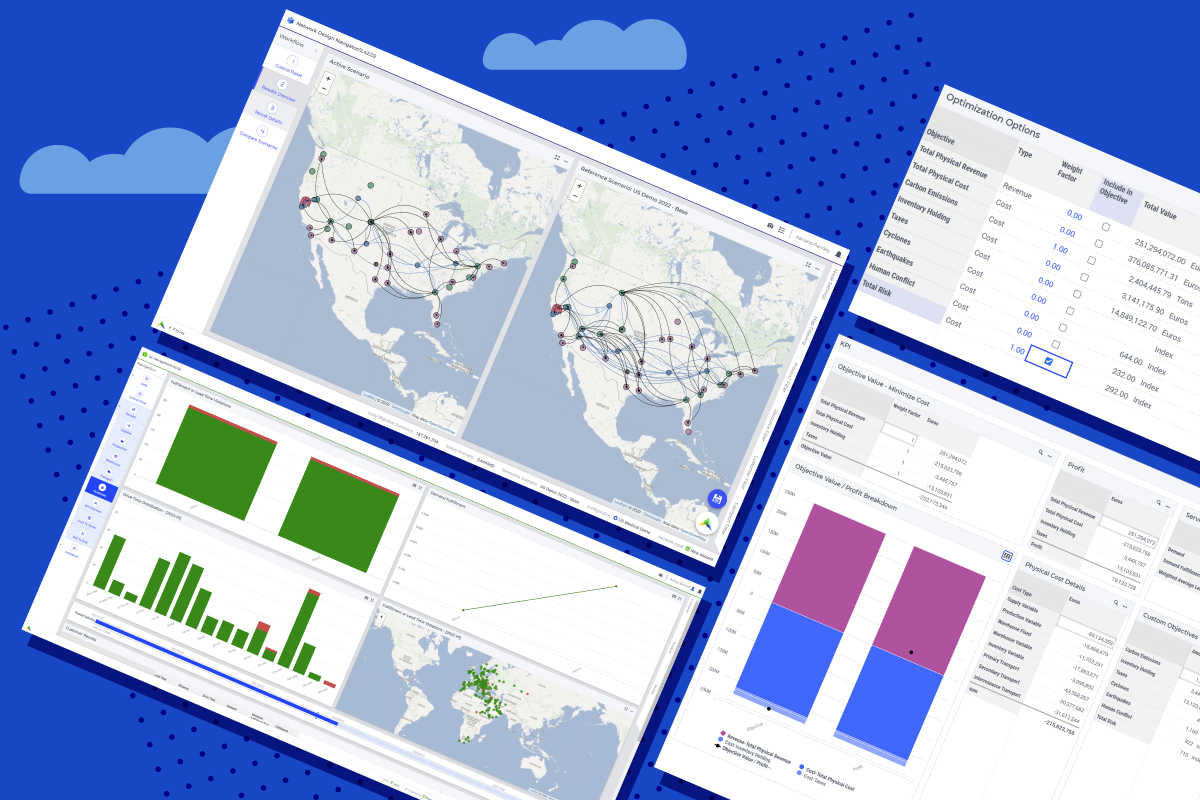Improved Multi-Echelon Demand Planning for a Leading Manufacturer
A global printer manufacturer and workplace solutions vendor was looking to improve its demand planning process. The company works with dozens of distributors and has over 8,000 stock-keeping units. They were using SAP in combination with Excel to forecast demand and make replenishment and distribution decisions. However, their forecasting and planning method had reached its limits.
Problem
The supply chain department at this global manufacturing company wanted to centralize demand planning and use distributor sell-out data and inventory data to make better replenishment decisions. They were using data from different sources but were not storing it in a central location, making collaboration difficult. Their Excel-based model was labor-intensive to run and only worked for a limited number of SKUs. They have over 100 distributor warehouses in the US and Europe and needed a better way to:
- Forecast demand for thousands of SKUs, taking uncertainty into account.
- Provide replenishment recommendations for different distributor tiers (master and sub-distributors) and their manufacturing department, and offer purchasing advice to their suppliers.
- Balance replenishment recommendations to maximize sales potential, while matching the overall inventory strategy.
They couldn’t find a standard tool that could support multi-echelon forecasting and replenishment for external distributors. So, their teams in the U.S. and Europe decided to develop a bespoke demand planning solution.
Solution
After a two-day proof of concept with Districon, an AIMMS implementation partner, the company decided to move forward with developing a multi-tier modeling and distribution tool. The custom-built solution helps the team easily clean historical data and centralize data management. It covers the end-to-end supply chain, from sub-distributors to manufacturing locations. Multi-echelon forecasting capabilities allow the team to use multiple demand forecasting methods. They can forecast at a monthly level, change forecast parameters more easily, and consider non-recurring demand (like new sales deals).
Algorithms running in the back end support product lifecycle management and sales calculations at three different levels:
- Distributor
- Warehouse
- SKU
Using optimization models, they can also provide purchase advice for suppliers and make better stock allocation decisions. They are better equipped to assess the financial impact of any possible supply issue.
Results
The demand planning app was originally rolled out in the US in 2016. Europe followed a few months later. It was also adopted in Canada and is still in use today. The company’s supply chain teams rely on it every month to have conversations with sales and present insights at Integrated Business Planning meetings.
The benefits:
- An increase in direct shipments
- Faster and more effective planning
- More balanced inventory levels all through the chain, from manufacturer to distributors’ warehouse locations
- Improved service levels
- Ability to cope with additional complexity, like adding options and SKUs
Implemented by:
![]()





